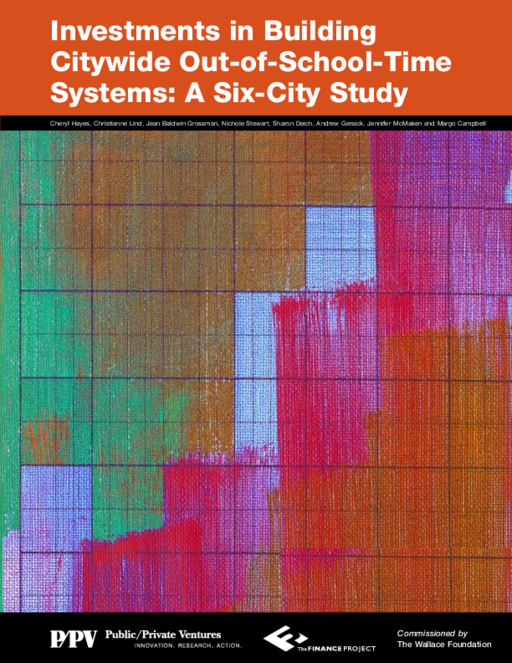- Author(s)
- Cheryl Hayes, Christianne Lind, Jean Baldwin Grossman, Nichole Stewart, Sharon Deich, Andrew Gersick, Jennifer McMaken, and Margo Campbell
- Publisher(s)
- Public/Private Ventures
Research Approach
The study uses a case-study approach. Two significant factors influenced the decision to use a case-study approach to examine investments in OST systems. First, these systems are complex, and they vary dramatically from place to place. Developing case studies allowed the researchers to gather detailed quantitative and qualitative information in a way that highlighted the nuances and gradations of system-building efforts within a real-life context. Second, their goal was to understand the “big picture” of how OST system building works in each of the study cities. OST systems involve many stakeholders, each with differing perspectives, knowledge, experiences, and entry points. Accordingly, it was important to gather data from multiple sources— including a wide array of local public- and private-sector leaders—that were not always neat, consistent, and comparable.
The researchers conducted extensive phone interviews and made site visits to each of the six cities between October and December 2007 to gather data on systems investments. In planning for the site visits, they worked closely with key informants to help identify the relevant system components in each city and the individuals and organizations most involved with and knowledgeable about these components. While on site, they met with stakeholders to explore investments (both monetary and in-kind) and sources of funding for local OST system-building efforts. Wherever possible, they supplemented the information gathered from a series of structured interviews with budgets and other documentation. The researchers also conducted follow-up calls to verify data, probe for hidden costs (especially those related to in-kind contributions) and gather additional information as needed. The informants included representatives from a variety of organizations and government agencies.
Throughout this report, investment data are presented in nominal dollars. For each initiative, the researchers analyzed both the type (monetary or in-kind) and the duration (one-time or annual ongoing) of investments to provide readers with a nuanced understanding of investment patterns.


